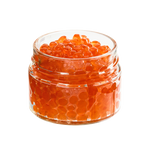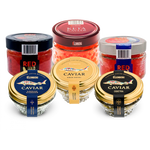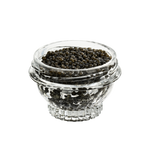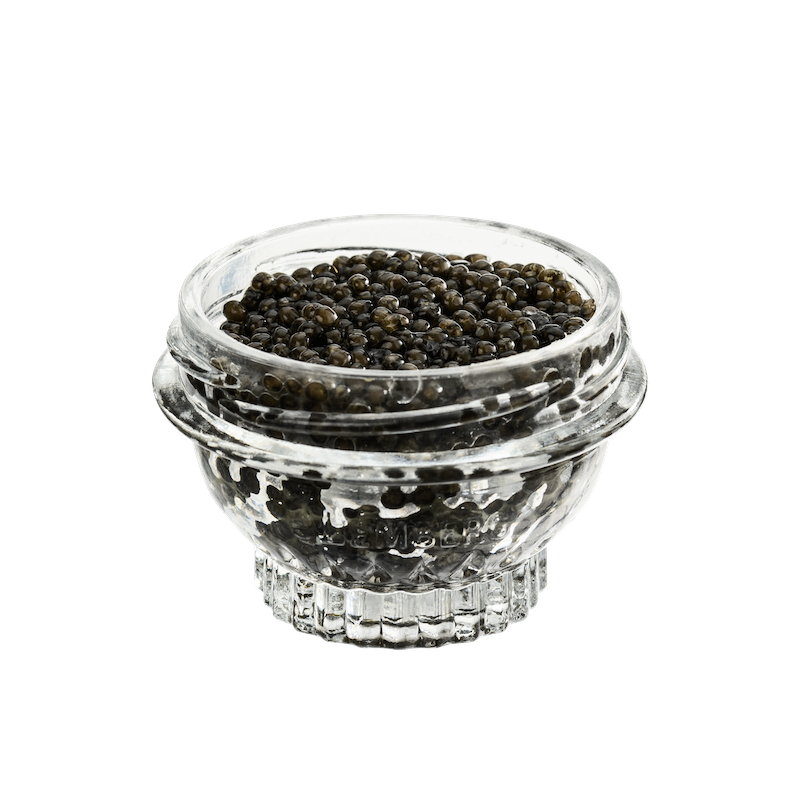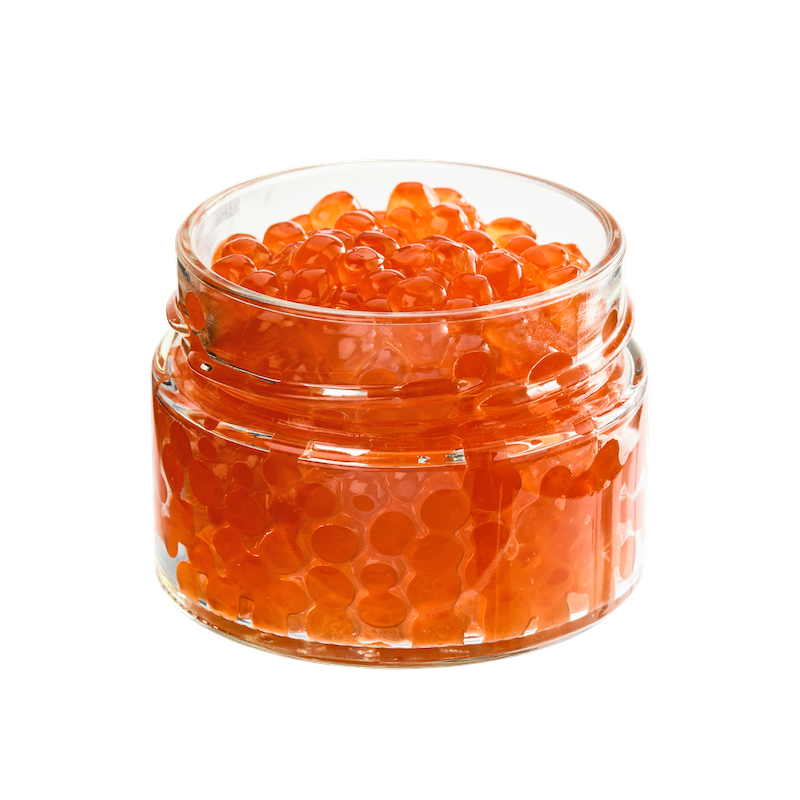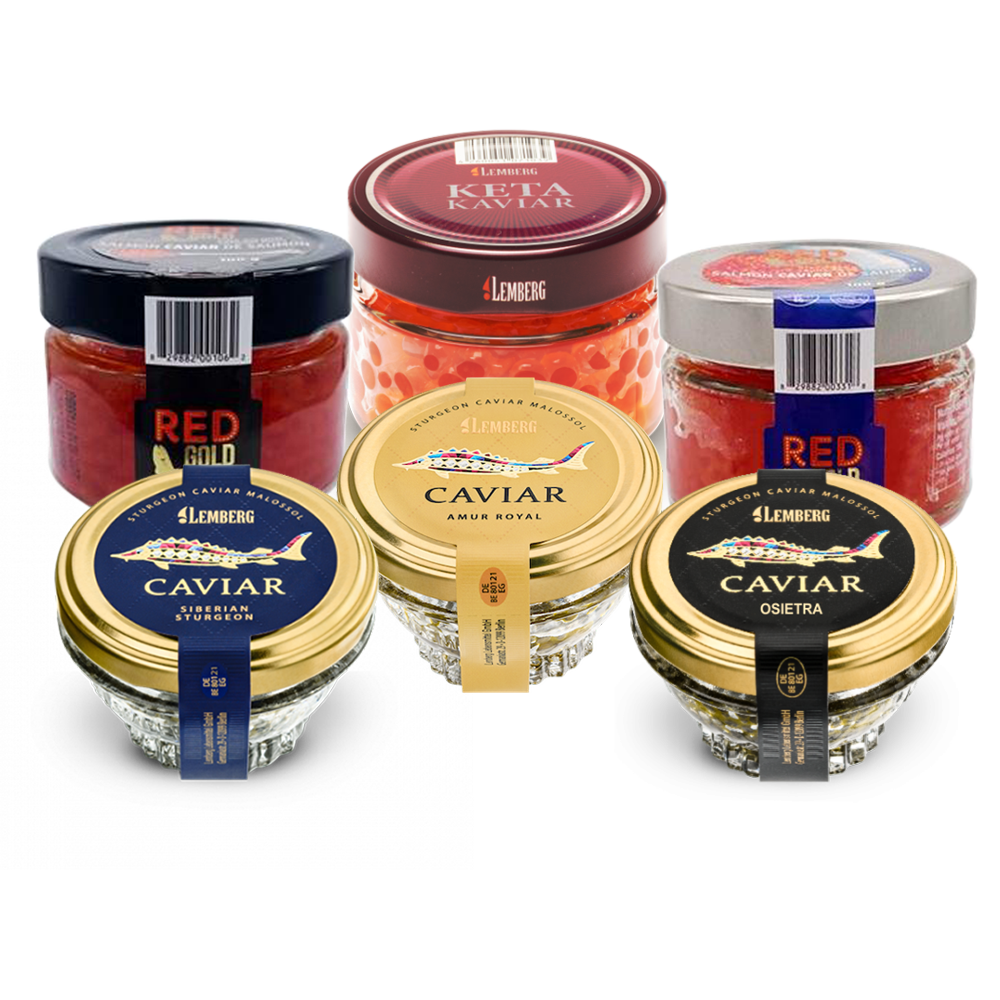Menu

What Fish Does Caviar Come From? Tracing the Origins Back to Sturgeon
Caviar has long been associated with luxury and decadence. The shiny black pearls have decorated the tables of royalty and gourmands for centuries. But before it becomes a pricey delicacy, caviar starts as eggs from a very specific group of fish.
There are 27 different species that fall under the scientific family Acipenseridae and are considered “true” sturgeon. Other common names for these fishes include freshwater sturgeon, black sturgeon, Atlantic sturgeon, beluga sturgeon, sterlet sturgeon, Russian sturgeon, and more. They reside primarily in the Northern hemisphere in rivers, lakes, and coastal waters of North America, Europe, and Asia.
In the past, harvesting wild Caspian Sea beluga sturgeon was common practice. During their migration in spring, mature females heavy with roe were caught by fishermen. They removed the prized eggs, processed them into caviar, and sold them at astronomical prices to elite buyers around the world.
But after years of overfishing, many sturgeon species including beluga became extremely endangered. In 1998, CITES (the Convention on International Trade in Endangered Species) banned the international commercial trade of wild beluga sturgeon and its prized caviar. This protection was expanded to all species of wild-caught Black Sea basin and Caspian Sea sturgeon in 2006. Most caviar today comes from farmed or sustainably caught sturgeon in accordance with CITES preservation efforts for vulnerable wildlife populations.
Farmers closely monitor water quality, nutrition, and conditions that keep the fish healthy and thriving. When females reach maturity after 5-15 years, their eggs are harvested humanely onsite for caviar processing. After the removal of eggs, sturgeon are returned to ponds for additional egg production in subsequent years.
Aquaculture alleviates pressure on vulnerable wild populations while sustaining production of top-tier caviars liked beluga and Kaluga. Caviar connoisseurs approve of the fishy, robust flavors that come from sturgeon raised in naturalistic environments.
While not “true” caviar, these alternatives offer textural excitement while sidestepping some ethical concerns around endangered species.
True Caviar Comes from Sturgeon
While the term “caviar” has expanded in modern use to include the roe of many fish, traditionally and legally it refers only to the eggs from sturgeon species. Sturgeon are ancient fish that have inhabited earth’s waters since the time of dinosaurs over 155 million years ago.There are 27 different species that fall under the scientific family Acipenseridae and are considered “true” sturgeon. Other common names for these fishes include freshwater sturgeon, black sturgeon, Atlantic sturgeon, beluga sturgeon, sterlet sturgeon, Russian sturgeon, and more. They reside primarily in the Northern hemisphere in rivers, lakes, and coastal waters of North America, Europe, and Asia.
Four Key Sturgeon Species for Caviar
While all sturgeons produce the delicacy, most caviar on the market is sourced from just a few key species:- Beluga Sturgeon. The beluga sturgeon, also known as the European or great sturgeon, is found natively in the Caspian and Black Seas. It is the largest of the sturgeon, growing over 6 feet long and weighing up to 1,100 pounds. Beluga caviar is rare and highly coveted for its refined, buttery flavor.
- Acipenser gueldenstaedtii, also known as Oscietra and sometimes referred to as the diamond sturgeon or Danube sturgeon, inhabits the waters of the Black and Caspian Seas. Its large black eggs are known for their nutty and mildly sweet flavor, making the caviar highly prized.
- Siberian Sturgeon. As its name indicates, Siberian sturgeon are found primarily in Siberian lakes and rivers that connect to the Arctic Ocean. Its flavorful eggs create Royal Siberian caviar.
- Kaluga Sturgeon. The Kaluga sturgeon is a close cousin of the beluga, also reaching over 1,000 pounds. Its buttery, nutty caviar is considered on par with top-quality beluga.
How Wild Sturgeon Are Caught for Caviar

In the past, harvesting wild Caspian Sea beluga sturgeon was common practice. During their migration in spring, mature females heavy with roe were caught by fishermen. They removed the prized eggs, processed them into caviar, and sold them at astronomical prices to elite buyers around the world.
But after years of overfishing, many sturgeon species including beluga became extremely endangered. In 1998, CITES (the Convention on International Trade in Endangered Species) banned the international commercial trade of wild beluga sturgeon and its prized caviar. This protection was expanded to all species of wild-caught Black Sea basin and Caspian Sea sturgeon in 2006. Most caviar today comes from farmed or sustainably caught sturgeon in accordance with CITES preservation efforts for vulnerable wildlife populations.
Aquaculture: Farming Caviar Ethically
With wild caviar harvest restricted or illegal, the majority of modern caviar production has shifted to aquaculture farming. Sturgeons are bred and raised in controlled pond environments designed to mimic their natural habitat.Farmers closely monitor water quality, nutrition, and conditions that keep the fish healthy and thriving. When females reach maturity after 5-15 years, their eggs are harvested humanely onsite for caviar processing. After the removal of eggs, sturgeon are returned to ponds for additional egg production in subsequent years.
Aquaculture alleviates pressure on vulnerable wild populations while sustaining production of top-tier caviars liked beluga and Kaluga. Caviar connoisseurs approve of the fishy, robust flavors that come from sturgeon raised in naturalistic environments.
Caviar Alternatives: From Salmon to Vegans
While traditional caviar hails exclusively from sturgeon, global appetites for fish roe have spawned some exotic new iterations:Salmon Caviar
Buttery, bright orange salmon eggs from farmed or wild Alaskan salmon. Milder taste than sturgeon at lower price points.American Paddlefish Caviar
From a Mississippi River fish in the same family as sturgeon. Smooth, nutty flavor.Carp or Lumpfish Caviar
In Europe, carp eggs frequently substitute for costlier sturgeon caviar, but with bolder, fishier flavors.Vegan/Vegetarian Caviar
For those who do not consume meat, vegetarian caviar has been created, which replicates the texture and taste using seaweeds, fruits like melon, or tapioca pearls, all without involving fish!While not “true” caviar, these alternatives offer textural excitement while sidestepping some ethical concerns around endangered species.
The Allure of Caviar: From Fish Egg to Culinary Marvel
Part of caviar’s mystique lies in the fascinating life cycle of ancient, prehistoric fish and the journey their eggs make from waters to table. Sturgeons have graced our aquatic ecosystems for millennia, their eggs nourishing both fish and human alike generation after generation. From the Caspian Sea beluga to aquaculture Siberian raised sustainably on fish farms, caviar remains an intriguing delicacy as well as controversial status symbol for years to come.FAQ
Can caviar come from any fish?
No, true caviar can only come from the eggs of sturgeon, while other fish roe may be labeled as "caviar." For example, salmon roe is sometimes marketed as caviar, but it does not meet the traditional and legal definitions of true caviar which require it to come from sturgeons.Are sturgeon killed for caviar?
In the past, wild beluga sturgeons were killed to harvest their valuable roe for caviar production. But due to conservation efforts and restrictions on catching wild sturgeons, the majority of caviar today comes from farmed fish. Aquaculture allows farmers to retrieve eggs from mature female sturgeon without killing them. Those females continue to produce eggs in subsequent years on an ongoing basis.Why is caviar so expensive?
Several factors contribute to the high price tags on quality caviar:- Sturgeon take a long time (5-15 years) to mature and produce prime roe compared to other farmed fish. The delayed time investment makes production costs quite high for farmers and harvests are low in volume.
- Controls on wild caviar harvests from endangered Caspian Sea sturgeon have drastically reduced supply.
- Processing and handling of delicate eggs into cured caviar requires extensive labor and expertise, especially with beluga and other premium caviars.
- As a rare, artisanal food and historic delicacy associated with royalty, caviar carries intrinsic value beyond the basic costs. Its status as a luxury good enables it to command premium pricing.
- Choosing a selection results in a full page refresh.






